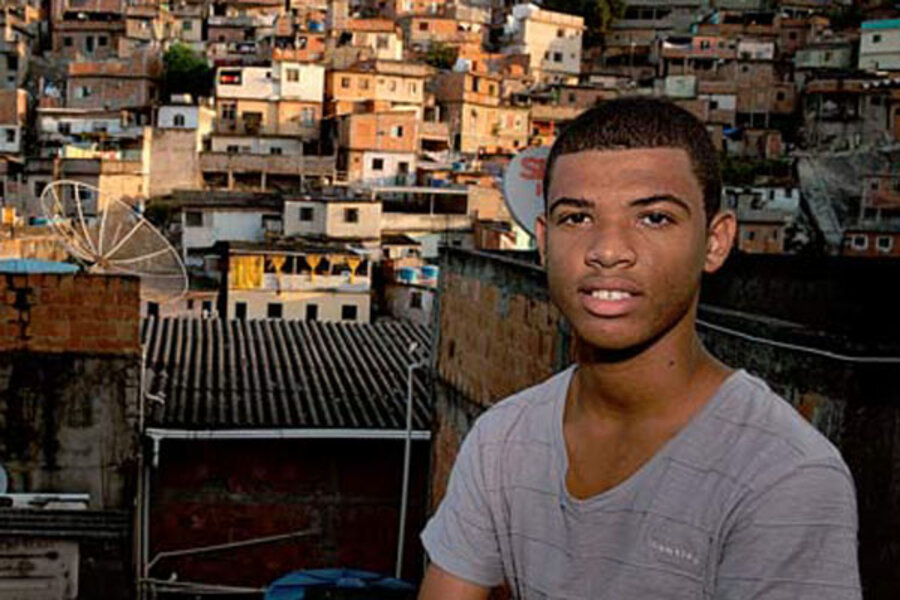The skinny 17-year-old could be just one more young person ambling around this large complex of favelas (slums) far from Rio de Janeiro's beaches: blanched T-shirt, mischievous grin, and conversations punctuated by the silent tapping of Twitter messages on his cellphone.
Yet he isn't. A combination of intrepidness, indignation – and, yes, a teen adeptness at texting and tweeting – has helped turn this public school kid into a local icon. He has become the voice of those in one of Rio's worst slums caught between dangerous drug traffickers and aggressive police.
As Brazil took the unprecedented step last year of sending in its armed forces to rout the drug dealers from this hilly sprawl of favelas, the teenager used the social media outlets of the small newspaper he started, at age 11, to tell residents what was happening.
"It [the paper] says what the residents want to say and what they aren't able to say through the large media outlets, because I don't believe the large media has a channel that's really linked into the community," says Silva, whose newspaper's staff – ages 14 to 17 – lounge around with laptops and wireless USB sticks at a local snack bar.
Silva's chronicles of the takeover have become so celebrated that he's now a regular on the national lecture circuit. He spoke at a Google conference in São Paulo and at a "TED Talk" in Curitiba.
In a nation where local phone calls can cost several dollars, the use of outlets like Twitter is booming. "If we know how to take advantage of these new forms, blogs, YouTube, Twitter ... we are going to be able to change Brazil, especially the favelas," says Silva, "because the favelas use the Internet."
– Taylor Barnes, Rio de Janeiro
Next: Mac-Jordan Degadjor: Blog man of Ghana







